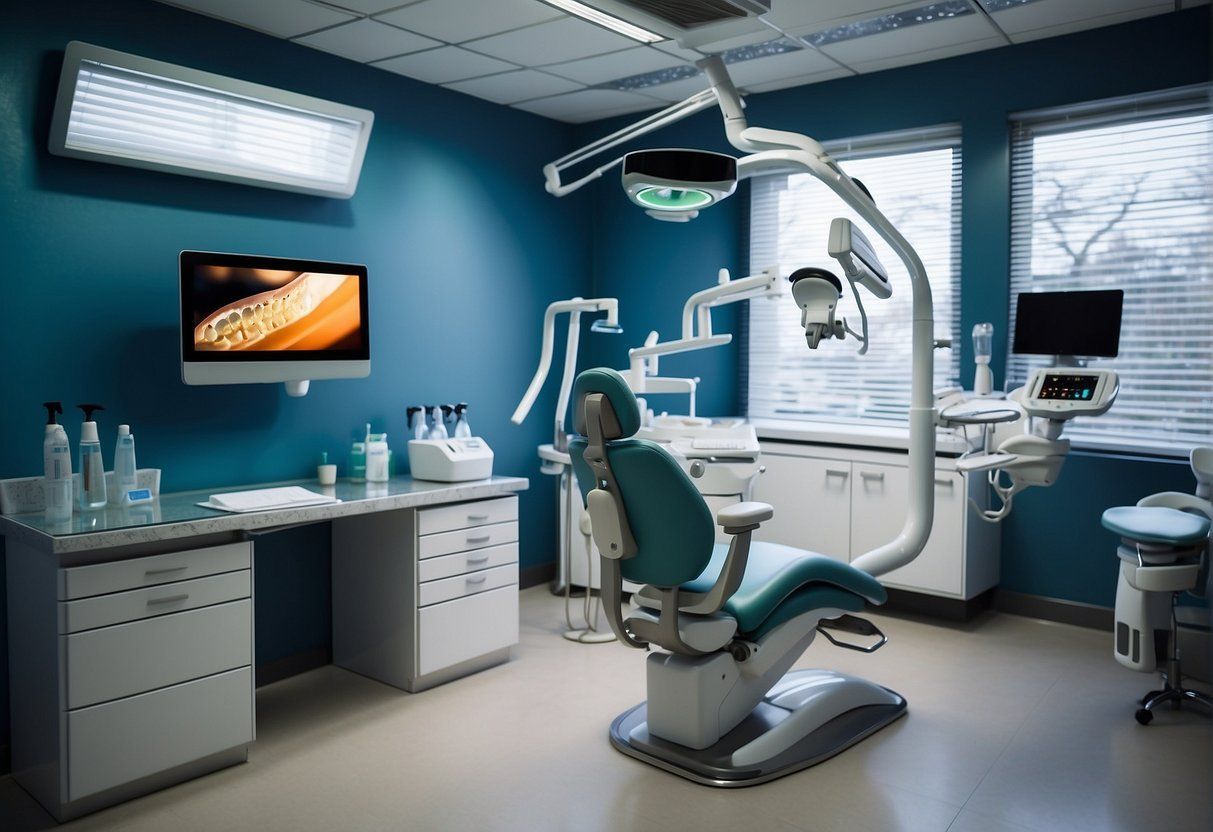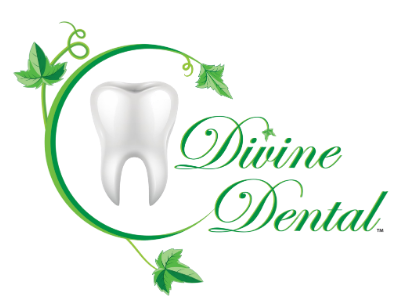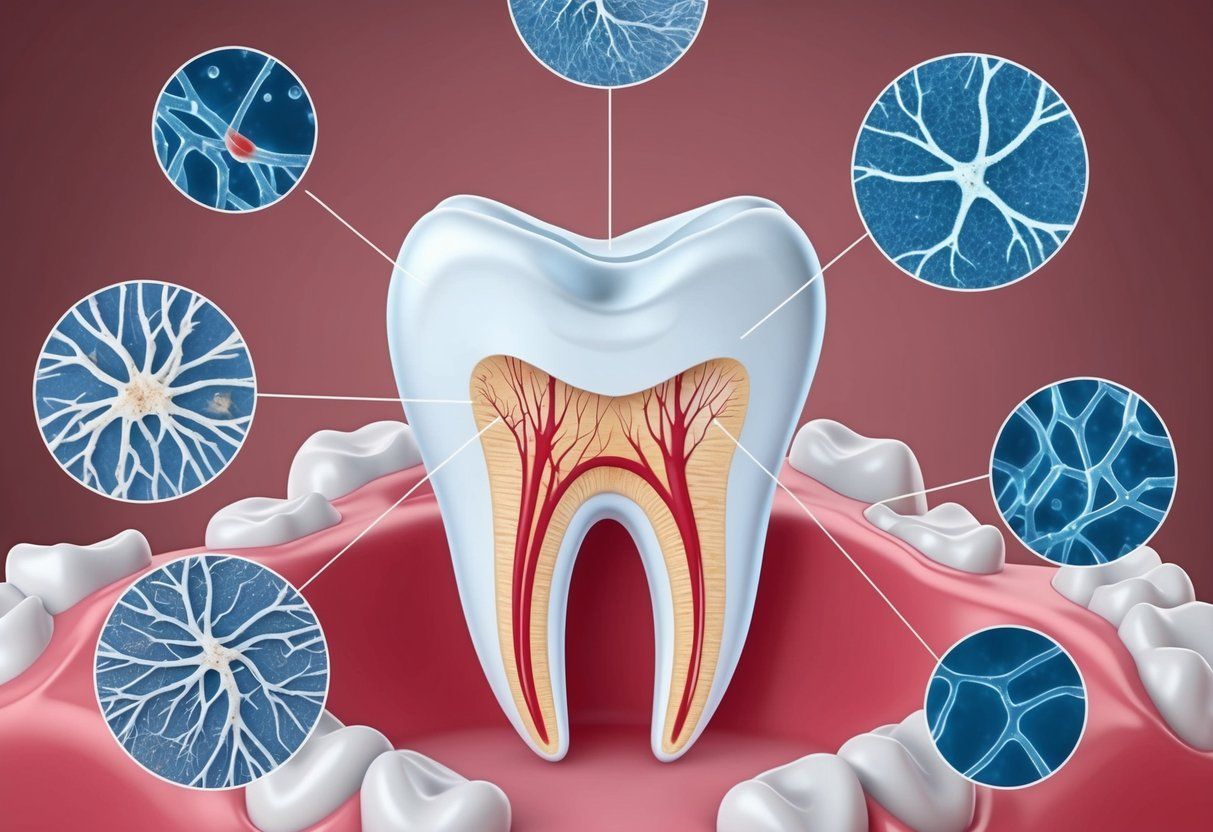Latest Trends in Dentistry: A Comprehensive Overview In Scottsdale, AZ
Dentistry has come a long way from being just about fillings and extractions. With advancements in technology and changing patient expectations, the dental industry has seen a surge of new trends in recent years. From cosmetic dentistry to business and marketing strategies, there is a lot to explore in the latest trends in dentistry.

Advancements in Dental Technology have been a game-changer in the field of dentistry. With the introduction of 3D printing , digital imaging , and laser technology, dental procedures have become more precise and efficient than ever before. The use of Artificial Intelligence (AI) and Virtual Reality (VR) has also revolutionized the way dentists diagnose and treat patients. These technological advancements have not only improved patient outcomes but also enhanced the overall patient experience.
Enhancing the Patient Experience has become a top priority for dental practices. Patients are no longer content with just receiving quality dental care. They expect a comfortable and personalized experience that caters to their individual needs. From online scheduling to tele-dentistry, dental practices are embracing new technologies to provide convenient and accessible care to their patients. As such, it is crucial for dental professionals to stay up-to-date with the latest trends and innovations to provide the best possible care to their patients.
Key Takeaways
- Advancements in Dental Technology have improved patient outcomes and enhanced the overall patient experience.
- Enhancing the Patient Experience has become a top priority for dental practices.
- Staying up-to-date with the latest trends and innovations is crucial for dental professionals to provide the best possible care to their patients.
Advancements in Dental Technology
Dental technology has been rapidly advancing in recent years, with new tools and techniques making it easier than ever for dentists to provide top-quality care to their patients. Here are some of the latest trends in dental technology.
Digital Dentistry and 3D Printing
Digital dentistry has revolutionized the way that dentists diagnose and treat their patients. With the help of intra-oral cameras and other digital tools, dentists can now create detailed 3D models of their patients’ teeth and gums. These models can then be used to create custom-fitted restorations such as crowns, bridges, and implants.
3D printing has also become an important tool in dentistry. With the help of specialized printers, dentists can now create highly accurate models of patients’ teeth and gums. These models can then be used to create custom-fitted restorations, as well as surgical guides for procedures such as implant placement.
AI and Diagnostic Accuracy
Artificial intelligence (AI) is also playing an increasingly important role in dentistry. AI-powered diagnostic tools can analyze images of patients’ teeth and gums to identify potential issues such as cavities, gum disease, and oral cancer. This can help dentists to detect problems early on , when they are easier to treat.
Teledentistry and Remote Care
Teledentistry is another trend that is gaining popularity in dentistry. With the help of video conferencing and other digital tools, dentists can now provide remote consultations and care to their patients. This can be especially helpful for patients who live in remote areas or who have mobility issues.
Overall, these advancements in dental technology are helping dentists to provide better care to their patients. By using digital workflows, 3D printing, AI, and teledentistry, dentists can now diagnose and treat a wider range of issues with greater accuracy and efficiency.
Impact of the Pandemic on Dentistry
The COVID-19 pandemic has significantly impacted the dental industry. As dental professionals work to adapt to the new normal, they have faced numerous challenges in providing care to their patients. This section highlights some of the major shifts in patient care and the ways in which dental practices have adapted and grown during the pandemic.
Shifts in Patient Care
The pandemic has led to a significant shift in patient care. With the risk of COVID-19 transmission, many patients have been hesitant to visit dental offices. This has led to a decrease in patient volume, which has impacted the financial stability of many dental practices. To address this issue, many dental practices have implemented new safety protocols to ensure the safety of their patients and staff. These protocols include pre-screening patients for COVID-19 symptoms, using personal protective equipment (PPE), and implementing social distancing measures.
Additionally, the pandemic has highlighted the importance of telehealth in dentistry. Many dental practices have started offering virtual consultations and appointments to provide patients with access to care while minimizing the risk of exposure to COVID-19. This shift towards telehealth has also increased accessibility to dental care for patients who may have difficulty traveling to a dental office.
Adaptation and Growth
Despite the challenges posed by the pandemic, many dental practices have adapted and grown during this time. To address the decrease in patient volume, many practices have expanded their services to include new procedures such as cosmetic dentistry and orthodontics. This expansion has allowed practices to attract new patients and increase revenue.
Furthermore, the pandemic has highlighted the importance of dental professionals in the healthcare system. Many dental professionals have been redeployed to support COVID-19 response efforts, including administering COVID-19 tests and vaccines. This has increased the visibility of dental professionals and highlighted their role in public health.
In conclusion, the COVID-19 pandemic has brought about significant changes in the dental industry. While dental practices have faced numerous challenges, they have also adapted and grown to meet the needs of their patients. As the pandemic continues to evolve, dental professionals will continue to play a critical role in providing care to their patients and supporting public health efforts.
Enhancing the Patient Experience
Dentistry has come a long way in terms of providing a comfortable and personalized experience to patients. With advancements in technology and techniques, dental practices are now able to offer a range of services that cater to the unique needs and preferences of their patients. In this section, we will explore some of the latest trends that are enhancing the patient experience.
Convenience and Same-Day Dentistry
One of the biggest trends in dentistry today is the emphasis on convenience. Patients are busy and want to be able to receive dental care without having to take time off work or disrupt their daily routine. Same-day dentistry is becoming increasingly popular as it allows patients to receive treatment in a single visit. This means that patients can have a filling, crown , or even a root canal done in just a few hours, rather than having to come back for multiple appointments.
Personalized Treatment Plans
Another trend in dentistry is the move towards personalized treatment plans. No two patients are the same, and dental practices are recognizing the importance of tailoring treatment to meet the unique needs of each patient. This includes everything from the type of treatment provided to the materials used. For example, some patients may prefer a more natural-looking filling , while others may want a filling that is more durable. By offering personalized treatment plans, dental practices can ensure that their patients receive the best possible care.
Virtual Reality and Entertainment
Finally, dental practices are also recognizing the importance of creating a relaxing and enjoyable environment for their patients. Virtual reality and entertainment options are becoming increasingly popular as they help to distract patients from the dental procedure and create a more pleasant experience. Patients can watch movies, listen to music, or even play games while they receive treatment, making the process feel less stressful and more enjoyable.
In conclusion, the latest trends in dentistry are all about enhancing the patient experience. By offering convenient same-day dentistry , personalized treatment plans, and entertainment options, dental practices can ensure that their patients feel comfortable and relaxed during their visit. With these advancements, patients can look forward to a more positive dental experience in the future.
Cosmetic Dentistry Innovations
Cosmetic dentistry has come a long way in recent years, with new innovations and technologies making it easier than ever to achieve a perfect smile . Here are some of the latest trends in cosmetic dentistry:
Digital Smile Design
Digital Smile Design (DSD) is a cutting-edge technology that allows dentists to design a patient’s new smile using computer software. With DSD, dentists can create a 3D model of a patient’s teeth and gums, and then use that model to design a new smile that is tailored to the patient’s unique facial features and preferences.
DSD has revolutionized the cosmetic dentistry market, making it possible for patients to preview their new smile before any work is done. This allows patients to make informed decisions about their treatment and ensures that they are happy with the final result.
Teeth Whitening and Veneers
Teeth whitening and veneers are two of the most popular cosmetic dentistry treatments. Teeth whitening is a simple and effective way to brighten discolored or stained teeth, while veneers are thin shells of porcelain or composite resin that are placed over the front of teeth to improve their appearance.
Both treatments have seen significant advancements in recent years, with new materials and techniques making them more effective and long-lasting than ever before. As a result, more and more people are turning to cosmetic dentistry to improve their smiles.
In conclusion, cosmetic dentistry is constantly evolving, with new innovations and technologies making it easier and more effective than ever to achieve a perfect smile. With treatments like DSD and teeth whitening and veneers, patients can now enjoy a beautiful, healthy smile that they can be proud of.
Business and Marketing Strategies
In today’s competitive dental industry, it is crucial for practices to have effective business and marketing strategies in place. Here are a few trends that are currently being implemented by successful dental practices:
Online Presence and Social Media
Having a strong online presence is essential for any business, including dental practices. With the majority of people searching for services online, it is important for dental practices to have a professional website that is easy to navigate and provides all the necessary information. Additionally, having an active presence on social media platforms such as Facebook, Instagram, and Twitter can help practices connect with potential patients and build brand awareness.
Subscription-Based Coverage
Subscription-based coverage is a growing trend in the dental industry. This model allows patients to pay a monthly fee for dental services, which can include routine checkups, cleanings, and even certain procedures. This type of coverage can be a great way to retain patients and provide them with affordable dental care.
Dental Practice Management
Effective dental practice management is essential for the success of any practice. Practice management software can streamline administrative tasks such as appointment scheduling, billing, and patient communication. This can help practices save time and improve patient satisfaction.
By implementing these business and marketing strategies, dental practices can attract new patients, retain existing ones, and improve overall practice efficiency.
Regulatory and Ethical Considerations
HIPAA Compliance
In dentistry, protecting patient information is crucial. The Health Insurance Portability and Accountability Act (HIPAA) sets national standards for the protection of personal health information. Dentists and their staff must comply with these regulations to ensure that patient information is kept secure and confidential.
HIPAA regulations require dental offices to implement administrative, physical, and technical safeguards to protect patient information. Administrative safeguards include policies and procedures to ensure employees are trained and aware of HIPAA regulations. Physical safeguards include measures such as locked cabinets and secure disposal of patient records. Technical safeguards include secure electronic transmission and storage of patient information.
Sustainability in Dentistry
As the world becomes more environmentally conscious, dentistry has also begun to focus on sustainability. Dental practices can reduce their environmental impact by implementing sustainable practices such as reducing waste and conserving energy.
One way dental offices can reduce waste is by using digital radiography instead of traditional film radiography. Digital radiography eliminates the need for chemicals used in film processing, reducing the amount of hazardous waste produced by the office.
Dental practices can also reduce their energy consumption by implementing energy-efficient lighting and equipment. Additionally, practices can reduce their water usage by implementing low-flow fixtures and encouraging patients to turn off the tap while brushing.
Overall, compliance with regulations and ethical considerations is essential in dentistry. By implementing sustainable practices and complying with HIPAA regulations, dental practices can provide quality care while protecting patient information and the environment.
Education and Professional Development
Continuing Education for Dental Professionals
Continuing education is an essential aspect of the dental profession, and it is necessary for dental professionals to stay up-to-date with the latest trends and technologies in the field. The American Dental Association (ADA) recommends that dental professionals complete a minimum of 60 hours of continuing education every three years to maintain their license.
There are many options available for dental professionals to meet their continuing education requirements, including online courses, conferences, and seminars. The ADA offers a variety of continuing education courses on topics such as dental implants, periodontics, and restorative dentistry. Additionally, the Health Policy Institute (HPI) provides research and analysis on the dental industry, which can help dental professionals stay informed about changes in the field.
Challenges for Dental Students
Dental students face a variety of challenges as they pursue their education and professional development. One of the biggest challenges is the cost of education. According to the ADA, the average debt for dental school graduates in 2020 was $292,169. This debt can be a significant burden for new dentists as they begin their careers.
Another challenge for dental students is the competitive nature of the field. With a limited number of spots available in dental school programs, students must work hard to stand out and gain acceptance. Once in dental school, students must maintain high grades and complete rigorous coursework to succeed.
Despite these challenges, the dental profession remains an attractive option for many students. With a growing demand for dental services and a strong job market, dental professionals can enjoy a rewarding career with many opportunities for growth and development.
Emerging Challenges and Opportunities

Aging Population and Dental Needs
As the population ages, the demand for dental services is expected to increase. According to the American Dental Association, older adults are more likely to have chronic conditions that affect their oral health , such as diabetes and heart disease. This presents a challenge for dentists who must provide specialized care for patients with complex medical histories.
To meet the needs of this growing demographic, dentists may need to adapt their practices to provide more comprehensive care. This could include offering services such as dental implants and dentures, as well as preventative care measures such as fluoride treatments and regular cleanings.
Technological Innovation and Labor Market
The dental industry is constantly evolving, with new technologies emerging all the time. From digital imaging to 3D printing, these innovations have the potential to revolutionize the way dentists provide care. However, they also present staffing challenges, as dentists must stay up-to-date with the latest techniques and technologies to remain competitive in the labor market.
To address this challenge, dental schools may need to revise their curriculums to include more training in emerging technologies. Dentists may also need to invest in continuing education to stay abreast of the latest trends and techniques.
In addition, technological innovations can help improve efficiencies and reduce costs, which can be especially important for smaller practices. For example, digital records can streamline administrative tasks and reduce the need for paper-based systems. This can help practices save money on staffing and other expenses.
Overall, the aging population and technological innovation present both challenges and opportunities for the dental industry. By adapting to these changes and investing in new technologies and training, dentists can position themselves for success in the years ahead.
Frequently Asked Questions
What are the emerging technologies in dental treatment?
Dental technology is constantly evolving, and there are several emerging technologies that are changing the way dental treatments are performed. Some of the latest technologies include digital scanning, 3D printing, and CAD/CAM technology. These technologies allow dentists to create more accurate and precise dental restorations , such as crowns and bridges. Additionally, new materials such as zirconia and lithium disilicate are being used in dental restorations, which offer greater strength and durability.
How is laser dentistry revolutionizing oral care?
Laser dentistry is a relatively new technology that is changing the way dentists perform certain procedures. Lasers can be used for a variety of dental treatments, including gum disease treatment, cavity detection, and teeth whitening. Laser dentistry is minimally invasive and can often be performed without the need for anesthesia. Additionally, lasers can reduce bleeding and swelling, resulting in faster healing times for patients.
What are the current best practices for dental hygiene?
Maintaining good dental hygiene is essential for preventing tooth decay and gum disease. The current best practices for dental hygiene include brushing twice a day with fluoride toothpaste, flossing daily, and using mouthwash. It is also important to visit the dentist regularly for cleanings and checkups. Additionally, a healthy diet that is low in sugar and high in calcium and vitamin D can help to promote good dental health.
What breakthroughs have there been in dental prosthetics recently?
Dental prosthetics , such as dentures and implants, have come a long way in recent years. Advances in materials and technology have resulted in prosthetics that are more comfortable, natural-looking, and durable. For example, implant-supported dentures are becoming increasingly popular as they provide greater stability and function compared to traditional dentures. Additionally, 3D printing technology is being used to create custom-fitted prosthetics that are more comfortable and easier to wear.
How is emotional dentistry changing the patient experience?
Emotional dentistry is a relatively new concept that focuses on the emotional wellbeing of patients during dental treatments. Dental anxiety is a common problem, and emotional dentistry aims to reduce anxiety and improve the patient experience. Techniques such as relaxation therapy, aromatherapy, and music therapy can help to create a more calming and comfortable environment for patients.
What innovative materials are being used in dental restorations?
Innovative materials are constantly being developed for use in dental restorations. One of the latest materials is zirconia, which is a type of ceramic that is extremely strong and durable. Another material that is gaining popularity is lithium disilicate, which is a type of glass ceramic that is used for dental crowns and veneers. These materials offer greater strength, durability, and aesthetics compared to traditional materials such as metal and porcelain.…




